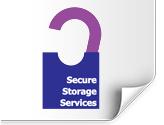Tips for Preparing Paperless Offices Back

Are you sick of paper cluttering up your office? Have you heard of a 'paper free world' in the guise of the 'paper free office'?
If you are reading this post it is highly likely you have. The idea of the paperless office originates way back in 1978 by office automation outfit Micronet Inc. Over the last ten years an ever increasing number of British businesses have taken the plunge into the world of the paperless office.
In an earlier post we outlined the benefits of the paperless office. In this post we outline practical tips for implementing your paperless heaven!
Here's a summary of the benefits of the paperless office:
- Less headache in dealing with clutter
- Less vulnerable to data theft
- Quicker data retrieval
- More environmentally friendly
- Saves money in the long term
Now we offer quick tips in implementing your paperless office.
#1. Plan for the costs involved
Although the paperless office saves businesses money in the long run, the upfront costs are often fairly considerable, depending on the size of your business and the quality of paperless infrastructure you invest in. Equipment, software and converting papers into digital copies accounts for the bulk of your investment in your paperless office.
A list of possible paperless 'infrastructure' includes:
- Electronic form management system
- Web server
- Portable Document Format (PDF)
- Database
- Digital signature equipment
#2. Plan for the logistics of the move
To implement the paperless office, you need to take account of the time and manpower required. All paper documents need to be converted into digital copies. Redundant paper copies must be archived or shredded.
Quantify as much as possible:
- Number of documents to scan
- Number of documents to destroy
- Number of documents to archive
#3. Plan for paper in the paperless office
This point seems rather counterintuitive but be warned even paperless offices need space for at least some paper. This could include papers which legally must be in paper form, such as deeds, certificates, signed contracts, official HMRC and Companies House documents and financial papers.
#4. Plan for productivity decreases
Your staff will likely need to chip in and help. This could mean your core business suffers as a result. You could either bring in temporary cover or you could choose to hire a professional to take care of the transfer instead. The latter option allows your staff to carry on with their work uninterrupted by the transfer.
We provide a range of services helping businesses transfer to the paperless office. This includes document scanning, document archiving and document shredding services. Contact us today for a free consultant.
#5. Ensure data protection isn't compromised during the transfer
Once all paper documents are scanned into your digital system you need to decide how to deal with now redundant paper versions. If you simply dispose of paperwork with the rest of your office's rubbish you may risk neglecting your obligations under the Data Protection Act 1998.
You therefore need to plan a safe and secure way to dispose of paper documents without it falling into the wrong hands. We recommend our document archiving, document shredding or document storage services. We make sure documents are either destroyed or archived in a safe and secure manner.
#6. Provide ample staff training
Make sure staff know of your plans to 'go paperless'. Instruct staff not to create paper documents if avoidable. This includes sending faxes, printing stuff off and photocopying. 'Wean' staff off paper slowly. That way the paperless office is 'no big deal' when the transfer is actually implemented.
You could implement a departmental 'printing budget' and reward staff who stay within budget.
#7. Take advantage of 'the cloud'
Make sure staff are able to share digital documents over a network or via an online cloud service such as Google Docs, Dropbox or Microsoft 365. This technology largely eliminates the need for printing documents when team members share work.
Conclusion
We hope the above does not put you off your desire to go paperless. It is vital for you to plan the move correctly. The effort in going paperless is well worth it in the long run. For a list of possible benefits click here.

 Based in Liverpool and Wirral, we provide document storage, scanning and shredding services nationwide.
Based in Liverpool and Wirral, we provide document storage, scanning and shredding services nationwide.

